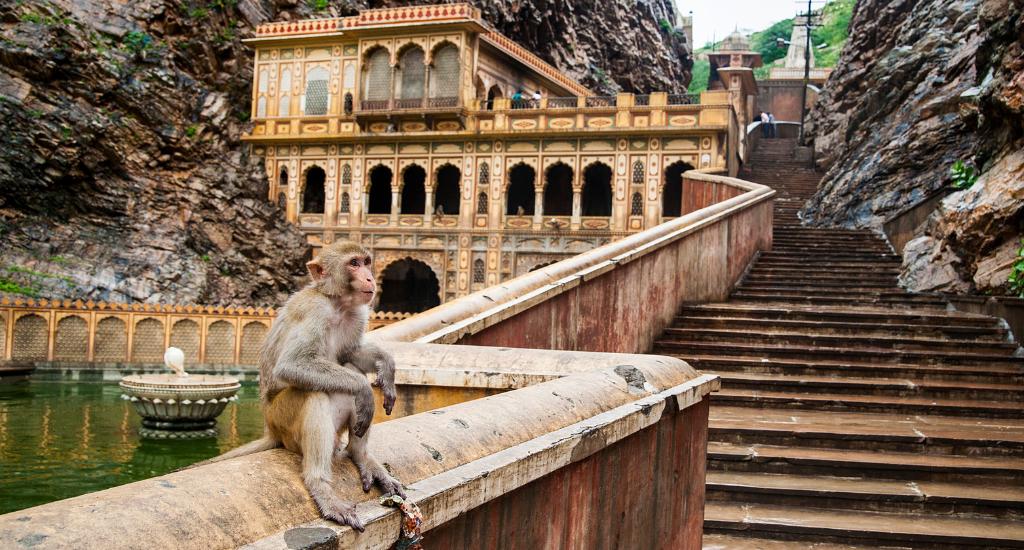
Animals are welcome in these Indian temples
From dogs to rats and monkeys, animals occupy a divine status at these temples around India. On World Wildlife Day, let’s take a look at these unique places of worship.

From dogs to rats and monkeys, animals occupy a divine status at these temples around India. On World Wildlife Day, let’s take a look at these unique places of worship.
Animals play a pivotal role in many sacred texts, but did you know that they are a part of living tradition in some temples around India? Whether it’s peaceful bears who venture out to mingle with devotees, or dogs, rats and monkeys that are venerated, here are some out-of-the-ordinary temples.

Located in Deshnoke, around 30 km from Bikaner in Rajasthan, the Karni Mata temple, better known as the Rat temple is home to over 25,000 rats or kabbas, which are considered sacred and reincarnations of the goddess’ kin.
Spotting a white rat is considered auspicious by the priests here. Karni Mata, an incarnation of goddess Durga, is venerated for her healing powers and miracles. As the story goes, she bargained with Yama, the god of death, to revive her stepson back to life. And Yama allowed him to return as a rat.
Devout locals, too, believe they will be reborn as one of the rats after death. Massive amounts of ‘prasad’ or offerings are prepared here daily, which are shared by both rodents and humans. The temple is impressive with silver-plated gates, intricately carved pillars, painted murals and marble carvings.

The Parassinikadavu Sri Muthappan temple, or the Parisinni temple, is a sacred pilgrimage spot in north Kerala. Located on the banks of the Valapattanam river, about 20 km from Kannur, it is distinguished by two bronze statues of dogs that stand at the temple gate.
The temple is dedicated to Lord Muthappa, who is believed to have loved street dogs. As the legend goes, the dogs followed him everywhere. Disrespecting the canine is tantamount to dishonouring the god here.
Dogs are venerated and pet parents bring them here to conduct ceremonies to name them. The ritual involves a priest, or theyyam, dressed in the god’s likeness, chanting mantras into the dog’s ears, followed by offering ‘prasad’. Dogs can also be seen freely roaming the temple grounds.

At this unique temple, a group of sloth bears visits daily and retreats peacefully to the forest after consuming the ‘prasad’ or holy offering.
The Chandi Mata temple is located in village Ghunchapali in the Mahasamund district of Chattisgarh, around 100 km from Raipur. The bears make their way here at the time of the aarti or prayer, and complete the ritual temple rounds or parikrama as well.
There has been no untoward incident reported so far. The activity is managed by volunteers from the nearby Malkangiri forest department who act as a shield between the bears and enthusiastic devotees. The sprawling grounds of the temple, which sits on a small hill, are surrounded by the forest from where the bears emerge.

Monkeys are considered sacred among Hindus and considered an incarnation of Lord Hanuman, whose idol stands atop the temple complex.
The 16th century Galtaji temple or Monkey temple, located in Khania-Balaji, about 10 km from Jaipur, is famous for its unique inhabitants–the playful Rhesus Macaques. Primates are believed to have been around for centuries at the complex, which houses several temples and sacred tanks.
Also read: The many shades of Varanasi ghats
The lead photo at the top shows a monkey inside the Galtaji Temple or Monkey Temple near Jaipur in Rajasthan. The temple is populated by over a hundred monkeys. (Photo courtesy Shutterstock)